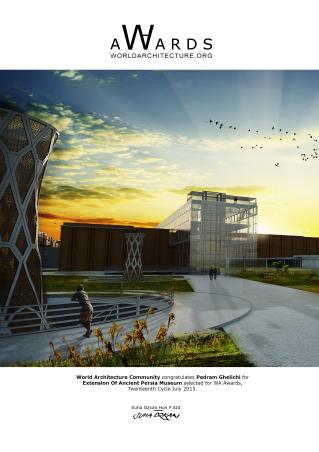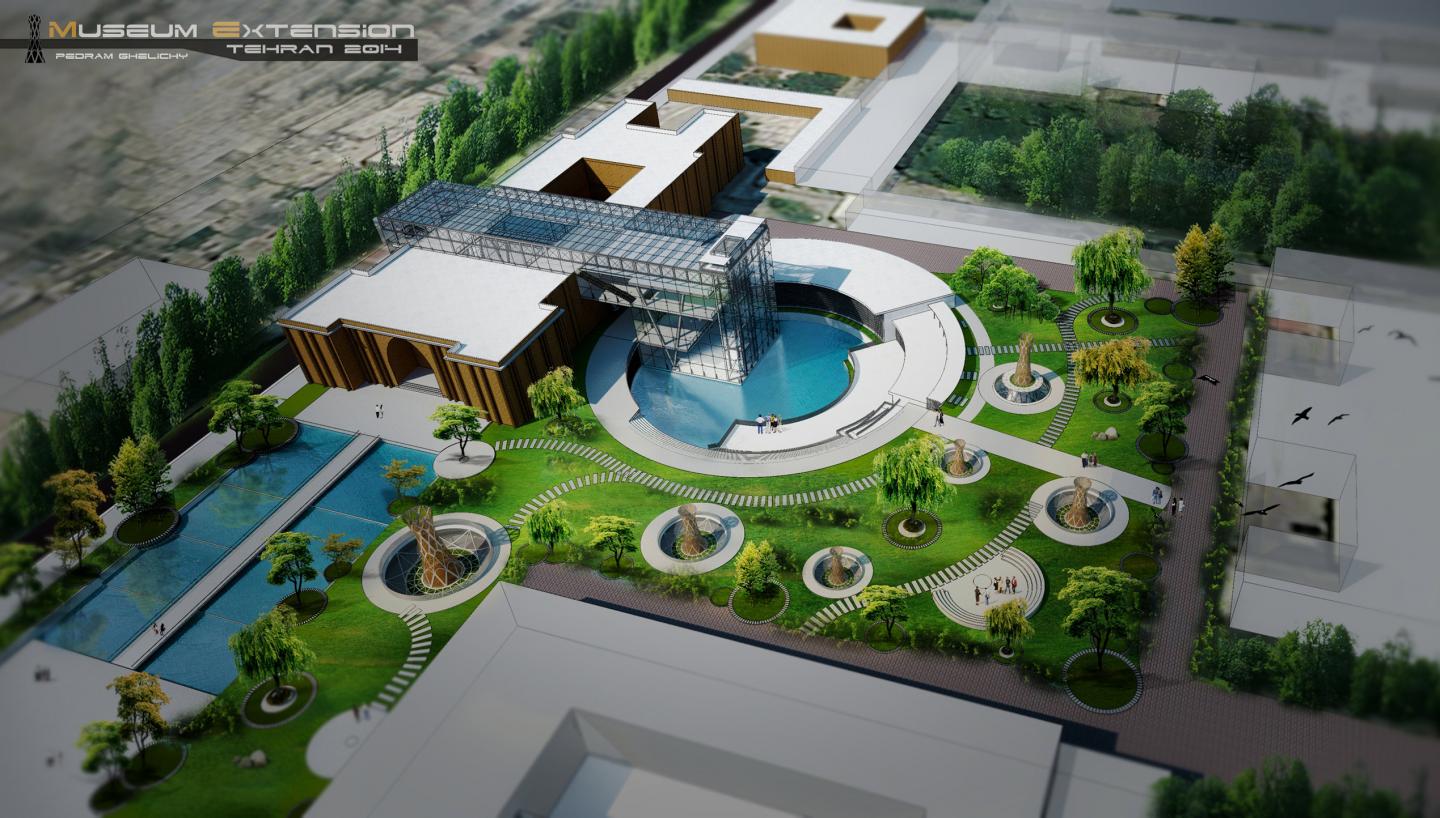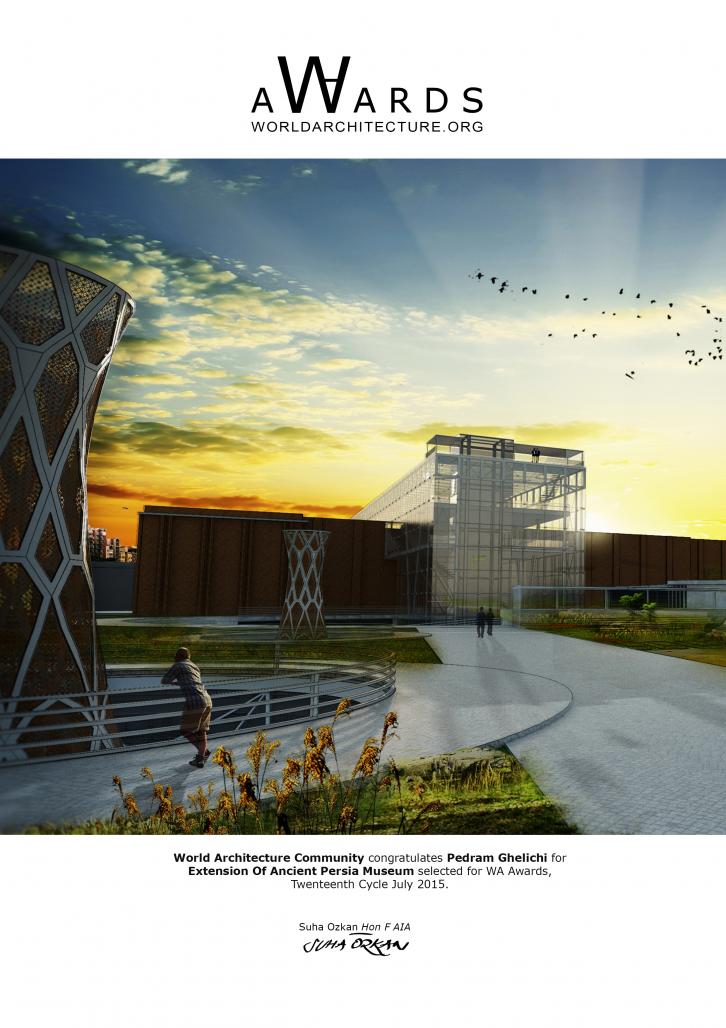Museum of Ancient Persia was built about 150 years ago and despite the young age of building and its style (Post Modernism) is successful in relation with city and its environment. Form of the museum was inspired by one of the oldest building in Iran (Ivan Madaen). Development plan due to structural damage and shortage of space for gallery need to be done. The most important characteristics of Museum of Ancient Persia are:
Museums distinct form and brick as dominant material and courtyard (elements from ancient Iran)
Museum is located in historical context of Tehran city and height restrictions for new construction
Existence of useless land in east part of the museum
Due to these characteristics, main idea was formed based on minimal interference with old museum. Using glass as material for extension form and place new gallery space, underground, will help to achieve this aim. Therefore, if we convert useless land in east part of museum to public space for city and use it as an opportunity to bring people in museum, it will attract more audience from other historical building in the vicinity of Ancient Persia Museum. Also, these historical buildings give us an opportunity to provide spectacular view from roof to this building. In order for this goal, main idea for extension of museum is underground gallery and garden museum having great bond with cube glass which will encompass the old museum. This cube glass enables audiences to move across the roof and enjoy watching garden museum and old buildings. Also in cube, Ancient Persia will be showed by hologram.
Therefore we have changes in interior space and roof. This cube glass is in line with the courtyard and with eliminating wall of the courtyard, modern bridge on void will connect 2 sides. In order to avoid damaging old structure, V column added and shaped new entrance space in interaction with old building.
End of the cube glass will be placed in circle courtyard, including new office space and preservation room for monuments. Next space after visiting cube glass, is cave gallery which will remind us to Stone Age in Iran.
Landmark galleries initiate visual interaction between people in museum and in the garden. Each landmark gallery is belong to specific ancient era. These galleries look like deformed cylinder with Islamic ancient pattern. These elements beside of their landmark role in garden, can be used as skylight and air conditioning in galleries just like Wind catcher (Badgir: is a traditional Persian architectural element to create natural ventilation in buildings).
2014
2014
Regarding exhibition spaces and galleries located underground and spans up to 15 meters, reverse concrete waffle with pretention was used as ceiling Structures. And considering green space for Garden Museum and vibrations caused by movement of people on that Garden, base isolators and steel deck also added to absorb these vibrations.Detail6&9. Therefore, in order from top, steel deck, base isolator and pretention reverse concrete waffle were considered. This complex roof is placed on pretention shear wall all around the plan. Galleries form are like deformed cylinder with pattern of Iranian Karbandi which provide strength against wind with using metal pipe and geometry. Detail 10. This Islamic geometry is also visible from inside of the gallery. Wall section3. Resistance against lateral forces provided by concrete shear wall between pipes in Gallery structure. In connection between galleries and ceiling, in order to avoid tensions between materials, Bean joint connection is used. Detail 8
Pedram Ghelichy
Extension of Ancient Persia Museum by Prm GhL in Iran won the WA Award Cycle 20. Please find below the WA Award poster for this project.

Downloaded 188 times.











